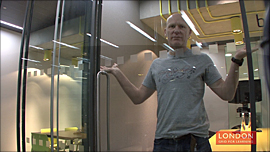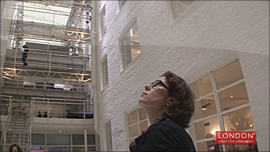KS3 Curriculum Links
Art and Design: Cultural understanding 1.3b
Understand the role of the artist, craftsperson and designer in a range of cultures, times and contexts.
Art and Design: Explore and Create 2.1e
Explore and develop ideas using sketchbooks, journals and other appropriate strategies.
Art and Design: Understand and evaluate 2.2a
Use research and investigative skills appropriate to art, craft and design.
Design and Technology: Creativity 1.3c
Explore and experiment with ideas, materials, technologies and techniques.
Key words
Activity
Preparation: Choose 4 spaces in the building with contrasting lighting atmospheres. Factor in that it will take time for the students to move from one space to the next.
Create a worksheet: draw 3 tables for students to complete based on the ones found here: ‘lighting characters’, natural lighting and artificial lighting. You may wish to include the lighting characters graph that plots natural lighting levels and contrast between dark and light to the ambience that is created.
Steps:
- Ask the students to ‘thought shower’ the different atmospheres / characters spaces and their lighting can have (bright, tranquil, loud, enclosed, oppressive, open, fluid) and how spaces can make you feel (happy, free, constrained) and to fill in the character types on the worksheet table.
- Lead the group on a character-discovering journey of the building:
- Take them on a route through 4 differently lit spaces.
- Stop in each space and ask students to tick a character for each one and how it makes them feel.
- Do a lighting investigation in each space. Divide students into groups giving each one a task:
- Count the number of openings in the space (they need to look up and down as well as side to side).
- Use their bodies to estimate the total size of the openings.
- Count the number of artificial light sources which give broad/diffuse lighting.
- Count the number of light sources which give spot lighting.
- Feel if the surfaces are generally shiny or matt.
- Look if the surfaces are generally dark or light in colour.
- See if there are long or short views from openings.
- Count the number and type of shading devices (louvres, shutters, external overhangs).
- Bring students together to pool their findings and fill in the worksheet.
- Ask students to plot the natural lighting level scores and artificial lighting type onto the lighting character graph and see if they can recognise a link.
- Students should begin to see the correlation between number of openings, size of openings, presence of shading devices, texture of surrounding surfaces and length of views.




